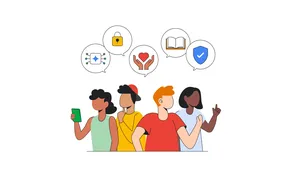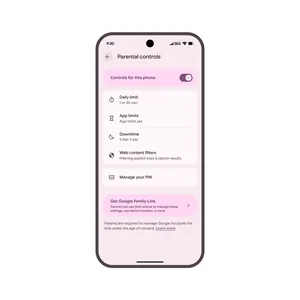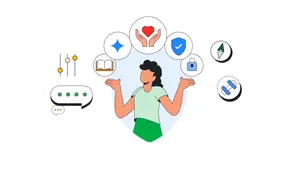A conversation on smarter and safer age assurance for Europe

European teens know the benefits and challenges of growing up with the internet at their fingertips. Our study The Future Report shows they want more balance, inclusion, and guidance. And yes, they worry about the risks.
At today’s “Growing Up in the Digital Age” Summit in Brussels, we’ll hear from teens whose views informed The Future Report, alongside parents, academics, policymakers, and creators.
The message is clear: Europeans want companies to protect young people in the digital world, not from it. We know that online, kids want to explore; teens want independence; parents want to protect - and everyone wants an experience where safety isn't just a feature, but is foundational.
A smarter, safer way forward on age assurance
Critical to this is how to check age online — a debate often pitched as a false choice between weak age gates and invasive ID scans. People understand the need for stronger protections, but they also don’t want their IDs exposed in a data breach.
Our research supports a “risk-based” approach where assurance matches risk. That means less intrusive assurance methods in most areas — news, education, or travel — and stronger checks for things like adult content or alcohol sales. The rigor matches the risk.

While some would like a more uniform system, or a universal arbiter of age, we believe that liability and responsibility rest with every service owner — the developer, the publisher, the app creator — because they know what they are offering. You don’t expect the credit card company to check if you are old enough to buy alcohol; the store should do that.
However, Google is helping by adopting standards and open-sourcing technology to make it safer and easier to adopt privacy-preserving age checks.
In our own services, we’ve used machine learning-based age estimation in Europe since 2020:
- Safer by default: We apply baseline protections until we have confidence the user is an adult (e.g. age restricting mature content on YouTube/Google Play).
- Assurance trigger: If a user declares they are 18 or older, we run their account information through our model to confirm their age.
- Extra protections: If we can’t confirm they are an adult, we enable features including SafeSearch and wellbeing tools.
- Verifying when needed: If we haven't confirmed they are an adult but they want access to mature content, we provide verification methods such as selfies, government IDs, or credit cards.
We look forward to sharing how others can employ similar approaches.
Universal verification’s hidden costs
Here’s what few Europeans want: requiring everyone (not only children) to provide IDs to access the internet.
Requiring verification across all services threatens to undermine privacy and exclude people without IDs. Worse, it could create a false sense of security, letting companies off the hook from investing in safeguards and age-appropriate experiences.
We view proposals to restrict access in much the same way. Blanket restrictions run the risk of obscuring the real issues, a danger recognized by a diverse range of voices — from human rights and family safety groups to parents, teens, and educators — who would like to make the digital world better for young people, not off limits to them.
By bringing together so many different voices today in Brussels, we hope to spark new ideas and promote healthy digital practices for Europeans of all ages.






